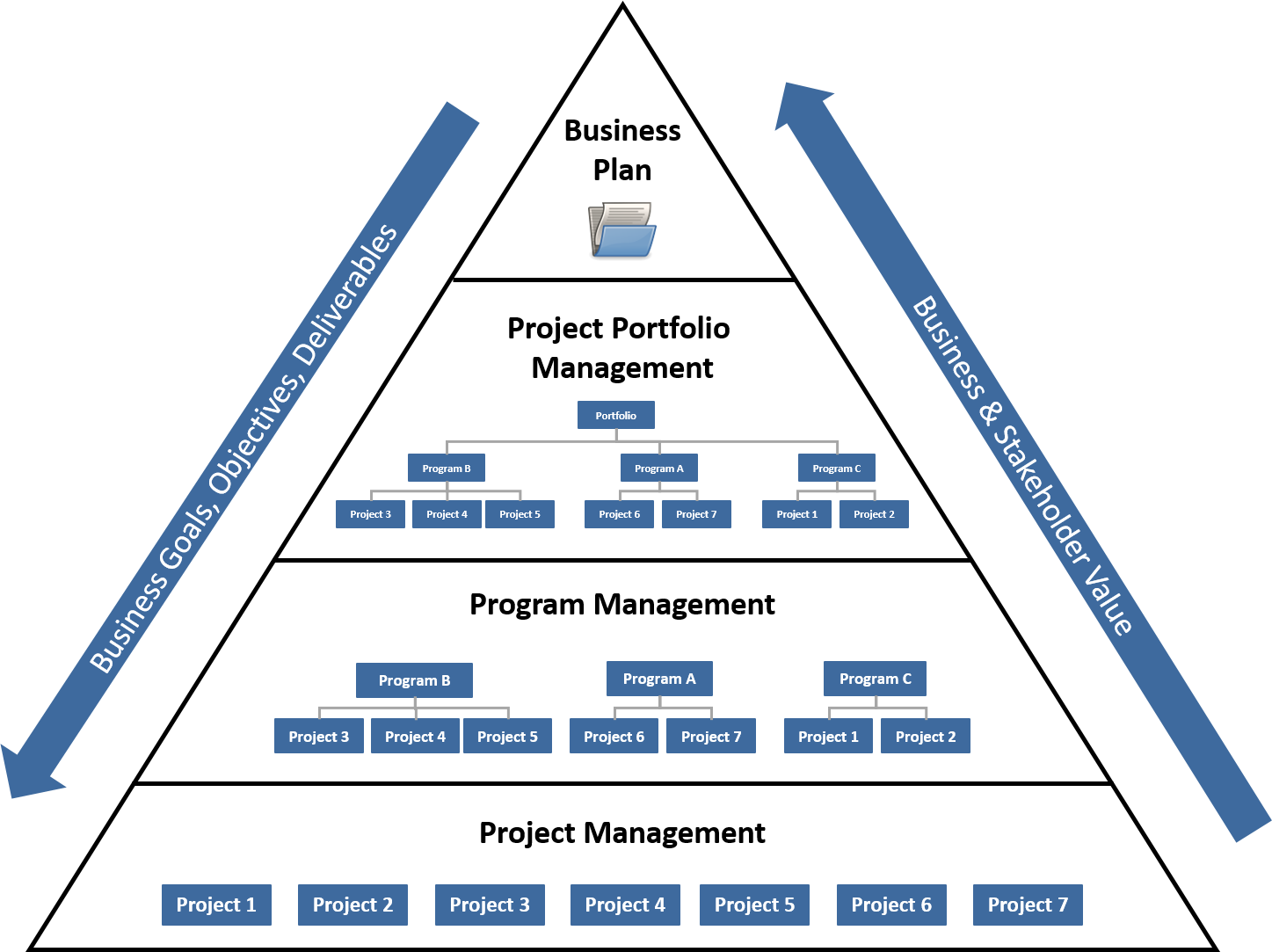Organizational Project Management
Organizations that excel in Project Management recognize that they must get the most out of every dollar spent on a project in terms of benefits for the business and for the Stakeholders. In order to do that, a framework called Organizational Project Management (OPM) is used to carefully invest in and monitor the projects with the greatest possible benefit and value. According to the Project Management Institute, "Organizational Project Management (OPM) is a strategy execution framework that utilizes portfolio, program, and project management as well as organizational-enabling practices to consistently and predictably deliver organizational strategy to produce better performance, better results, and a sustainable competitive advantage."
OPM works from the premise that an organization has limitations on budget, time, and resources to deliver their business plan, goals, and objectives. As such, organizations can review projects one at a time and decide if they are worthy to proceed, or they can use an OPM Framework to manage the selection and implementation of a combination of projects for the organization. This review process will ensure the maximum return on investment and that the resources in the organization are not overloaded with work, thereby causing delays in the project and achievement of business results. Organizations that use an OPM framework are also typically at the highest 2 levels of Project Management Maturity.
Organizational Project Management (OPM) Framework
OPM FRAMEWORK TRIANGLE
Below is the Organizational Project Management (OPM) Framework triangle we reference in the previous video.

Comparing OPM Framework Layers
The following table from the Project Management Institute shows a comparative view of each of the layers in the OPM Framework. It provides a summary of how each layer operates as well as how each layer is integrated with the other layers in the Framework.
Comparative Overview of Portfolio, Program, and Project Management (Table 1-1) *
| Projects | Programs | Portfolios | |
|---|---|---|---|
| Scope | Projects have defined objectives. Scope is progressively elaborated throughout the project life cycle. | Programs have a larger scope and provide more significant benefits. | Portfolios have an organizational scope that changes with the strategic objectives of the organization. |
| Change | Project Managers expect change and implement processes to keep change managed and controlled. | Program Managers expect change from both inside and outside the program and are prepared to manage it. | Portfolio Managers continuously monitor changes in the broader internal and external environment. |
| Planning | Project Managers progressively elaborate high-level information into detailed plans throughout the project life cycle. | Program Managers develop the overall program plan and create high-level plans to guide detailed planning at the component level. | Portfolio Managers create and maintain necessary processes and communication relative to the aggregate portfolio. |
| Management | Project Managers manage the project team to meet the project objectives. | Program Managers manage the program staff and the Project Managers; they provide vision and overall leadership. | Portfolio Managers may manage or coordinate Portfolio Management staff, or program and project staff that may have reporting responsibilities into the aggregate portfolio. |
| Success | Success is measured by product and project quality, timeliness, budget compliance, and degree of customer satisfaction. | Success is measured by the degree to which the program satisfies the needs and benefits for which it was undertaken. | Success is measured in terms of the aggregate investment performance and benefit realization of the portfolio. |
| Monitoring | Project Managers monitor and control the work of producing the products, services, or results that the project was undertaken to produce. | Program Managers monitor the progress of program components to ensure the overall goals, schedules, budget, and benefits of the program will be met. | Portfolio Managers monitor strategic changes and aggregate resource allocation, performance results, and risk of the portfolio. |
OPM Benefits
Organizations that implement OPM are able to reap many benefits by aligning the business strategy to the execution of the organizational portfolio that supports it. The illustration below shows the benefits achieved by establishing an OPM culture.

Potential OPM Benefits for Organizations (Figure 1-3)
Project Management Institute. Implementing Organizational Project Management: A Practice Guide. (Newtown Square, PA: Project Management Institute, Inc., 2014), 4. Copyright and all rights reserved. Material from this publication has been reproduced with the permission of PMI.
To summarize the image, the following are the benefits of OPM:
- Efficient decision making
- Improved communications
- Predictable delivery performance
- Improved market competitiveness
- Improved cost control
- Effective operations
- Competitive advantage
- Increased productivity
- Alignment of strategy and execution
- Increased customer satisfaction


No comments:
Post a Comment
Please keep your comments relevant.
Comments with external links and adult words will be filtered.